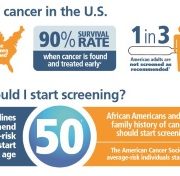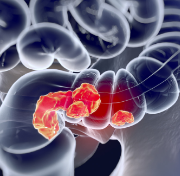Malabsorption: An Overview
Malabsorption is a condition in which a person has difficulty digesting and/or absorbing nutrients from food. Here’s what you need to know.
Causes of Malabsorption
Malabsorption can be caused by various diseases. Typically, malabsorption involves difficulty absorbing nutrients like vitamins, fats, proteins, or sugars. Any disease that hinders the body’s ability to absorb nutrients can cause this condition. Common diseases that cause it include cystic fibrosis, lactose intolerance, celiac disease, whipple disease, crohn’s disease, an infection affecting the pancreas, HIV and AIDS, parasitic infection, and some genetic disorders. Some medications can cause the condition as well. Additionally, malabsorption can occur as a side effect of radiation treatments and surgeries that remove part of the small intestine or pancreas.
Symptoms
Several symptoms can accompany malabsorption. These include bloating, gas, abnormal stool, and chronic diarrhea. Children with the condition may have a weight or rate of weight gain that is much lower than average, and may not grow and develop at expected rates. Adults can experience weight loss, weakness, and difficulty thinking.
Diagnosis
Diagnosing malabsorption can involve several types of exams and tests. Doctors evaluate a patient’s medical history and symptoms to gather initial evidence. They then may pursue different testing approaches. Stool tests can measure the amount of fat in a patient’s stool to diagnose the malabsorption of fat, one of the most common symptoms of the condition. Stool samples can also be examined under a microscope to identify any undigested food fragments or parasites. Doctors may also perform blood or urine testing to detect high levels of undigested substances like Vitamin B-12 or lactose.
Once malabsorption is diagnosed, identifying the underlying cause is an important next step. Biopsies, imaging testing (including x-rays and CT scans), and pancreatic function tests can all help identify the underlying cause.
Treating and Preventing Malabsorption
Treatment involves both treating symptoms and treating the underlying cause of malabsorption to ensure proper nutrient absorption. Medication can treat symptoms like diarrhea. Nutrient and fluid replacement can treat nutrient deficiency and dehydration. Additionally, high-calorie diets can help the body absorb more nutrients. These diets can include varying amounts of proteins, fats, carbohydrates, and key vitamins and minerals. Injections of vitamins and minerals can also sometimes help. There are also some medications that can slow down the digestion process in the small intestine. This allows food to be in the small intestine for a longer time.
Prevention measures vary based on the underlying cause of the condition. When diseases like cystic fibrosis or celiac are a factor, managing those diseases is an important way to prevent malabsorption issues. Additionally, since some antibiotics and laxatives can cause malabsorption, you should use them carefully. Follow your doctor’s instructions to manage and treat the condition and prevent it from becoming severe.
Our experienced team at GHP has years of experience treating conditions including malabsorption. We can help establish the best plan of care for your situation. Contact any of our office locations to learn about the options we offer and schedule an appointment today.













